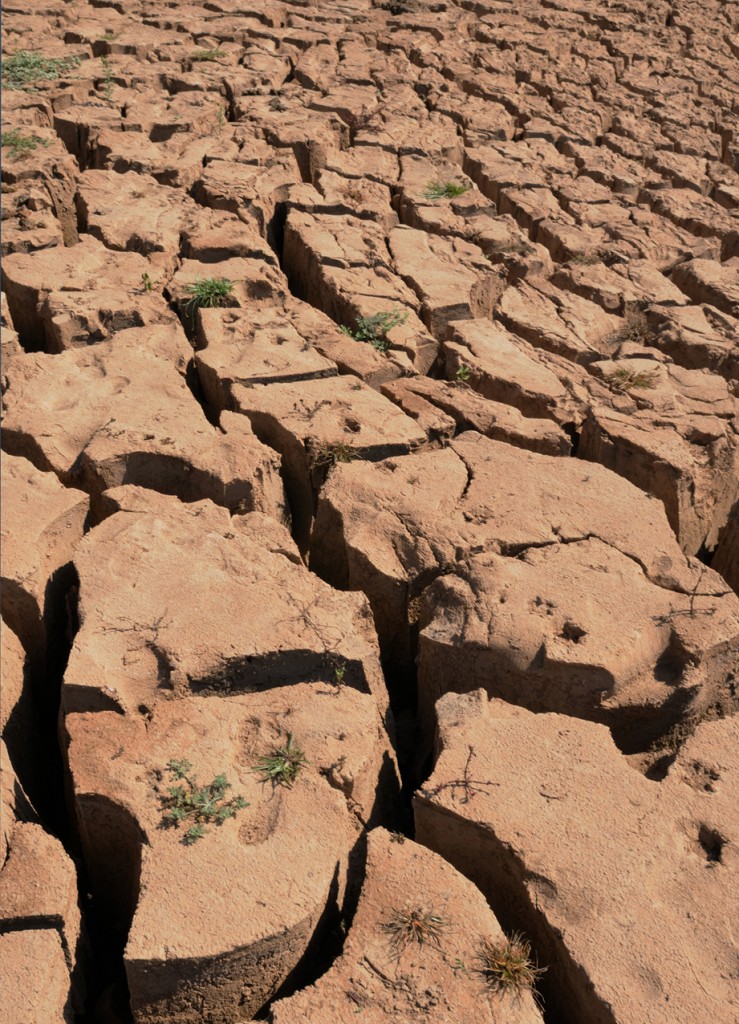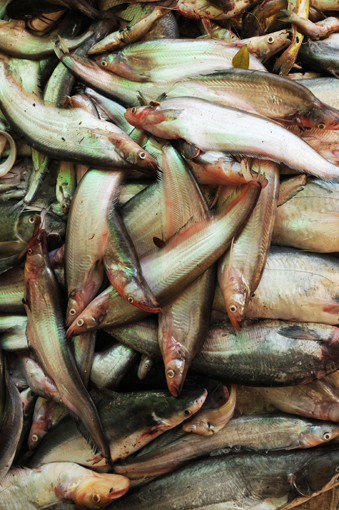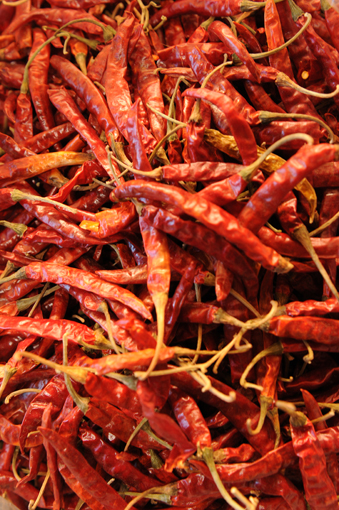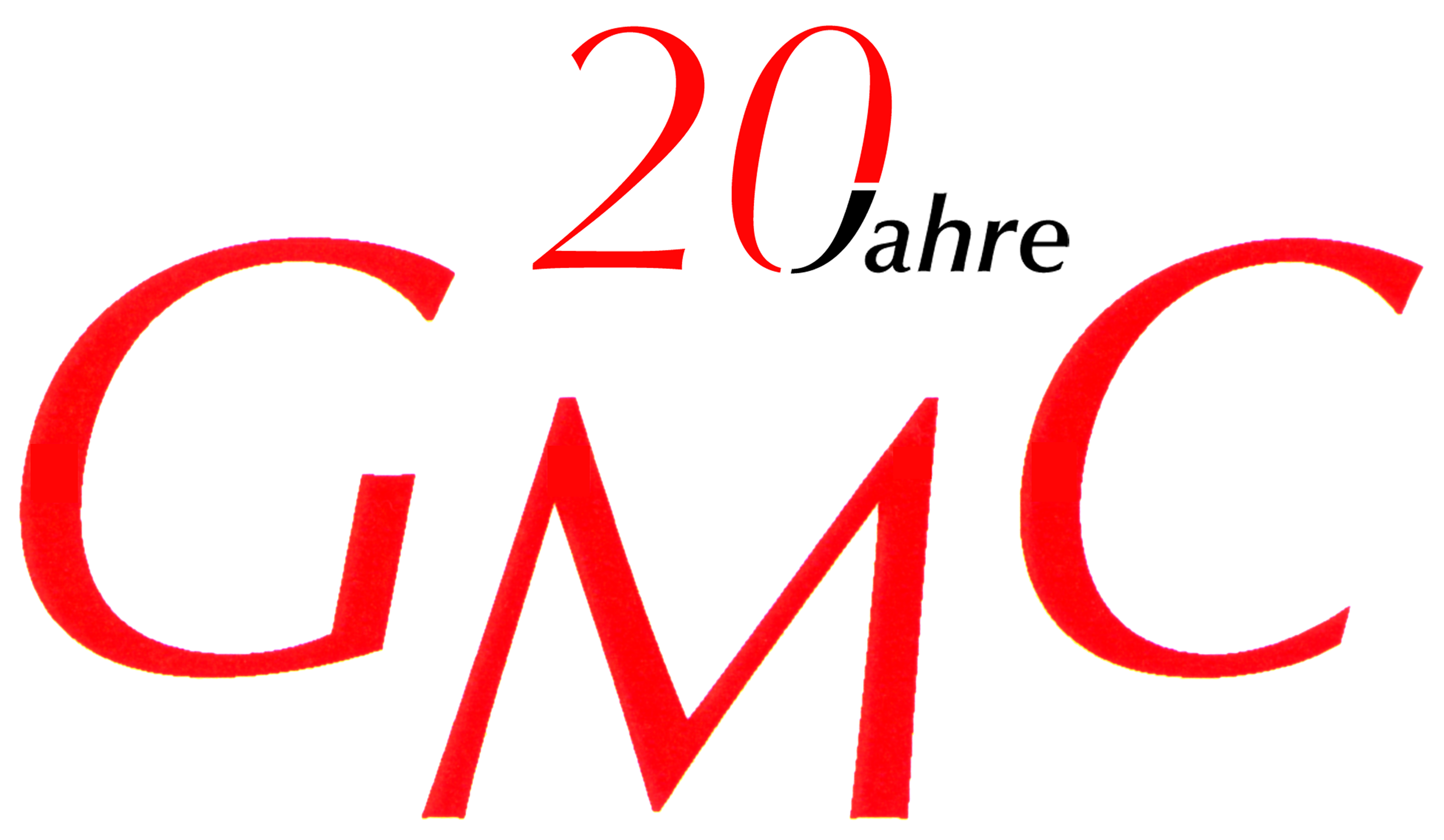
FOREWORD
The author, Gerd Michael Müller, born in Zürich in 1962, traveled as a photo-journalist to more than 50 nations and lived in seven countries, including in the underground in South Africa during apartheid. In the 80 years he was a political activist at the youth riots in Zürich. Then he was involved in pioneering Wildlife & eco projects in Southern Africa and humanitarian projects elsewhere in the world. As early as 1993, Müller reported on the global climate change and in 1999 he founded the «Tourism & Environment Forum Switzerland». Through his humanitarian missions he got to know Nelson Mandela, the Dalai Lama and other figures of light. His book is an exciting mixture of political thriller, crazy social stories and travel reports – the highlights of his adventurous, wild nomadic life for reportage photography .
First it shoots through the multifaceted jungle face and bizarrely rugged riverbed landscapes, then it meanders another 1000 kilometers through rice-growing flatlands and finally fans out into a delta with 4000 tropical islands. The Mekong is the lifeblood of Indochina and the pulsating lifeline for seven million Laotians. What could be more natural than to explore the charms of Laos on a hotel boat and to drift downstream, contemplating the hustle and bustle of Laotian life. To slow down from the hustle and bustle of everyday life, to look calmly over the iridescent green tones of the jungle or to glide over the shining company-ment and to let the soul dangle.
A trip on the Mekong River near the Golden Triangle is still an adventure today and just as exciting as it was in the days of the first Western explorers, the Frenchmen Lagrée and Garnier, who took two years for their expedition (1866-68). They were still struggling up the river in small outrigger boats against the wild rapids. Numerous jagged rocks, huge sandbanks, rocky gorges, narrow bends and the strongly varying water level, which can rise by several meters within hours, require extreme caution and precise knowledge of all dangerous places from the ship’s captains. At night, the upper reaches of the Mekong River are closed to navigation. It would be too dangerous in the darkness on the river. These are the pitfalls in the dry season. In the rainy season, on the other hand, the river swells rapidly by up to 20 meters.
Then logs weighing tons often shoot downstream at breakneck speed. Even on our short trip, the water level rose by three meters within two days. This was due to heavy rainfall in China and the opening of a dam. No wonder the upper course of the Mekong is one of the most beautiful but also one of the wildest river upper courses in the world. Our captain manages indeed, and sometimes resembling a small miracle, even on the way back downstream in the wake of the rapids, to curve around all the dangerous cliffs and skillfully weave through the narrow passages with the jagged rocks. In the dry season, the bizarre rocky outcrops rise up to above the deck of the boat. In the rainy season, they disappear below the surface of the water.
The river trip begins in the cultural heart of Laos, in the historic center of the city of Luang Prabang, which is situated in the protection of the spur between the Mekong and its tributary Nam Khan in northern Laos at an altitude of about 300 meters and is a trading center for rice, rubber and teak wood and handicraft products made of wood, textiles and paper. Since an international airport was built here, it is also the starting point for tourists coming from Vietnam or Bankok. The number of tourists in the old royal city of Laos is manageable. Between the many backpackers mingle more and more jetsetters who want to see the quiet beauty of Luang Prabang before it gets loud and crowded as in Cambodia or Vietnam.
In 1995, Luang Prabang was declared a Unesco World Heritage Site. 32 Buddhist monasteries and all of the French colonial architecture in the city were listed and have since been restored. Restrictive urban planning is also in place to prevent violations of the unique art-historical character of the city center. Luang Prabang’s urban history is inextricably linked to the history of Laos‘ origins. The political decline of the Sukhothai kingdom in northern Thailand in 1345 and the shift of the political center in Siam to Ayyuuhaya in 1351 also accelerated the need for a political unification process east of the Mekong River. 1365 is generally cited as the founding year of Lang Chang (the Land of a Million Elephants) under Fa Ngum. As a vassal of the Khmer Empire, Fa Ngum had received the Buddha statue Phra Bang as a coronation gift from Angkor. This was venerated in Luang Prabang, which was the capital of the kingdom of Lan Chang between 1354 and 1560, as a sacred statue with a function of legitimizing the rule.
Around 1356, Luang Prabang became a place of pilgrimage for the Phra Bang Buddha statue. Under King Setthatirat, many Buddhist monasteries were built in Luang Prabang in the 16th century. In the course of the Buddhist missionary work, among others, Wat Pasman was built on the site of today’s Wat That Luang as the oldest sacred building in the city. A considerable loss of power for Luang Prabang meant the transfer of the capital to Vientiane, which King Setthatirath had arranged in 1560 out of fear of attacks from Burma. Nevertheless, Luang Prabang remained the cultural center of the country. For more than three centuries, it became a pawn in the struggle between Thai and Burmese for political supremacy between the Irrawaddy and Mekong rivers.
When Laos came into the crosshairs of the power-political rivalry between France and England around 1886, France hoped to reach southern China by sailing up the Mekong River, but the Mekong proved to be unnavigable throughout. Nevertheless, the French were interested in political control of Laos as a strategic safeguard for their colony of Vietnam. Cleverly tactical, France took advantage of the distress in which the Laotians found themselves in the face of raids by Chinese gangs in 1887 and unceremoniously declared the region of Luang Prabang a protectorate of its colony Union Indochinose (1893-1954). In contrast to Vietnam, Laos was not of economic importance to France. Until the middle of the 20th century, Laos and thus also Luang Prabang were strongly influenced by cultural and architectural influences of the colonial power France. Even before France’s devastating defeat at Điện Biên Phủ in 1954, Laos was granted political independence in 1953.
Despite the International Laos Conference in Geneva in 1962, at which the country was granted neutrality, military supplies for the Viet Cong in South Vietnam during the Indochina War passed through Laotian territory along the so-called Ho Chi Minh Trail. Heavy bombing by the U.S. Air Force was the result. The CIA inflicted death and devastation on Laos on an unbelievable scale during the Vietnam War (1965 – 1975); the Americans bombed Laos with over two million tons (fragmentation and napalm bombs as well as the nerve agent „Agent Orange“). More bombs fell on Laos than on Germany and Japan combined in World War 2. Nevertheless, the GI’s did not find the Ho Chi Mingh Trail. The peace-loving Laotians have a 200-year history of conflict with foreign aggressors. Every year, hundreds of people are seriously injured by mines. Defusing squads, mostly women, still search the ground for bombs. The city of Luang Prabang was largely spared the fighting, although units of the communist Pathet Lao organization entrenched themselves north of the city in the Pak-Ou Caves area. In 1975, communist units captured the city.
Luang Brabang is home to over 2500 monks who make pilgrimages through the streets of Luang Prabang every morning shortly after sunrise in their orange robes, taking mild offerings in their pots from the faithful and tourists. Mostly elderly women and tourists, let the procession of monks pass by kneeling and donating to each a handful of rice, some fruits, candies, a few banknotes or other things to live on. What cultural sites and religious treasures are there to discover here? First, there is the Royal Palace (Ho Kham), built between 1904 and 1909, now the National Museum, where the throne of the rulers of the Lan Chang period stand. Then the Vat Xienthong (also Wat Xieng Thong) – a temple complex on the Mekong River, built in 1560 under King Setthathirath and restored in 1960-1962. It was the only temple in the city to survive the looting of 1887 intact. The architectural style with the roof reaching almost to the ground is typical for northern Laos.
A gem is also Vat Visounarath (also called Wat Visoun or Wat Visounarath) is a temple complex located on the southeastern side of Phousi Mountain. King Visounarath founded the monastery in 1512, which was destroyed by Chinese hordes in 1887. Most of the complex was rebuilt in the 20th century. The sim (Lao term for the main building of a wat)from 1898 contains Khmer-style window columns. Inside, since 1942, there is a museum with numerous Buddah statues especially in the rain calling gesture typical of Luang Prabang (standing with overlong arms pointing down parallel to the body).
In addition, there are two other temples: That Makmo (the Watermelon Stupa) donated by Phantin Xieng, the wife of King Visounarath, in 1504, the stupa was rebuilt in 1932, with the precious grave goods transferred to the royal palace. And the Vat Sop stupa in the northeast of the old city, founded as early as 1480 as the funeral temple of King Chakkrapat. Behind Vat Sop, on the street called Thanon Vat Sop, there is a typical Lao Baan residential quarter, where you can get an impression of the everyday life of the locals. Last but not least: Mount Phousi (130 meters high, 328 steps), the topographic accent and spiritual center opposite the Royal Palace with a magnificent view of the city area, the Mekong River as well as the forested mountain landscape in the surrounding area. Then head to the night market at the foot of Phousi in Thanon Sisavangvong, the main street of the old city, handmade textiles, sou-venirs and food are offered daily between the Royal Palace and the cross street Thanon Setthathirat from 6 pm. Many of the women traders belong to the Hmong people, who are known for their high-quality weaving, embroidery and sewing.
In Laos, beyond Theravada Buddhism, there is also ancestor worship and animism, which are still widespread among the many ethnic minorities (Hmong, Khmu, Akha or Lanten) in the mountainous regions in the inadequate north bordering China and Burma. The Hmong, for example, are archaically structured opium clans with magical spirit worlds and mythical powers, who to this day believe in their spirit world, with which they have a lively connection through their opium and canabis consumption. The opium farmers live in the isolated highlands of the Golden Triangle completely self-sufficient and reject any government, as well as modern living structures to this day. They live in dark huts without electricity or heating in the most remote highland regions of Laos, as they did hundreds of years ago, and engage in skirmishes with Laotian government soldiers. But the latter are just as unable to secure the Laotian border as the Vietnamese allies, who engage in skirmishes with the Chinese. The Chinese often get the short end of the stick and are said to have three times as many casualties. The Thais also repeatedly tried to invade Laos and were repulsed by the Vietnamese. Since the generals in Hanoi made it clear to Bankok that they would advance right up to Bankok next time, there has been calm on this front.
The Hmong allied with the Americans in the Vietnam War and supplied the CIA with thousands of tons of raw opium annually for their costly war. Rumor has it that the CIA packed 150,000 tons of raw opium per year into empty ammunition crates and flew them directly to Mexico on the doorstep of the United States using Air America pilots and private charters from the Corsican mafia in Laos, which was heavily involved in the international drug trade. The CIA thus not only financed its dirty war, which cost a billion dollars a day toward its end, but also fueled the opium trade and drug consumption of quite a few U.S. citizens and Mexicans. The irony of history: The top Hmong general lived in Washington and enjoyed the protection of the U.S. government, otherwise he would have long since landed in The Hague. The Hmong exodus has resulted in over 150,000 U.S. emigrants in San Diego. Furthermore, many Hmong also live in French Guiana and are therefore Europeans with French passports.
Laos magical Mekong meander and the 4000 islands.
Afterwards, we will descend by plane from Luang Brabang to the commercial metropolis of Pakse in the south of the country, where the second part of the river journey in the Mekong Delta begins. Here the river landscape looks quite different. Wide river streams, flat land mostly overgrown with rice paddies or sand islands and here and there extensive hill ranges far away on the horizon. The trip is very leisurely and more focused on the life on board. You sunbathe on deck and read a book or listen to music and let the world just glide by. That was then the less exciting but all the more leisurely and relaxing river trip. But also here in the south there is a large temple complex called Vat Phou. However, it is a temple complex built by the Khmer. Not quite as impressive as Ankor Wat in Siam Reap, the capital of Cambodia, which I also visited and was impressed by the colossal Khmer cultural strongholds.
But in the morning we are greeted by elephants taking a dip in the Mekong River. Before they either set off on a tourist safari, silently stalking through the dense jungle along the impressive river landscape, carrying enthusiastic backpackers on their backs, or are needed for work assignments around the village. They are the strongest builders‘ helpers, replacing the crane and the tractor. Under the shouts of the Mahuds, the elephants skillfully pile up the huge logs that they had previously placed in the right position.
In Laos there are also still numerous wild elephants in the inaccessible regions of the north. To this day, between 40 and 60 new species of animals are also discovered there every year. A new species of deer and the largest spider in the world are also among the most amazing discoveries. Unfortunately, due to the destruction of the habitat of flora and fauna, a large number of animal and plant species are threatened with extinction here as well. In 1996, 68 species of mammals, birds reptiles and fish were considered endangered. However, about 14% of the territory is now protected. Forests are threatened primarily by logging, clearing for arable land, and fuel production, with about 8% of the country’s energy needs met by wood. Annual forest loss is estimated at about 300,000 hectares.
Another tourist highlight is the picturesque karst and river landscape around Vang Vien. The Boracay of Indochina, where backpackers get high on grass and opium, is halfway to Laos‘ capital Vientiane, which like Luang Brabang is known as the city of a thousand temples. Here, the sacred That Luang stupa with its chunky gold-plated tower towers above all other religious structures, while on the lowlands near Pakse, Laos‘ economic center, the intricate ruins of ancient Khmer temples can be seen at Vat Phou, the largest Khmer complex outside Cambodia.
In the lowlands of the Mekong near Pakse, where the Mekong Islands await their guests, lie the 4000 tropical islands on the lower reaches of the Mekong. On the largest of them live 30,000 Laotians, who intensively use the fertile alluvial soil for agriculture and also engage in lively fishing. Rice cultivation, fishing and agribusiness have been the most important resources of the country, from which the lowland Laotians have lived quite well. On the smallest Mekong islands and alluvial dunes, on the other hand, there is hardly room for two herons or a palm tree. The Mekong River has already reached a considerable width here and fans out into a wide delta.
So it is no wonder that the market of Pakse, the largest goods transfer point in all of Indochina is. It is unbelievable what there is to see and taste here. Gigantic the abundance and mountains of rice, vegetables, salads, spices, fruits and fine fresh Mekong fish. There are thousands of frogs jumping around in bowls, there are grilled rats and snakes, small puffer fish and all kinds of other specialties. You, dear reader, should see this with your own eyes. After a side trip to the Kuang Si waterfalls, we return to the capital of Laos, Vientianne.
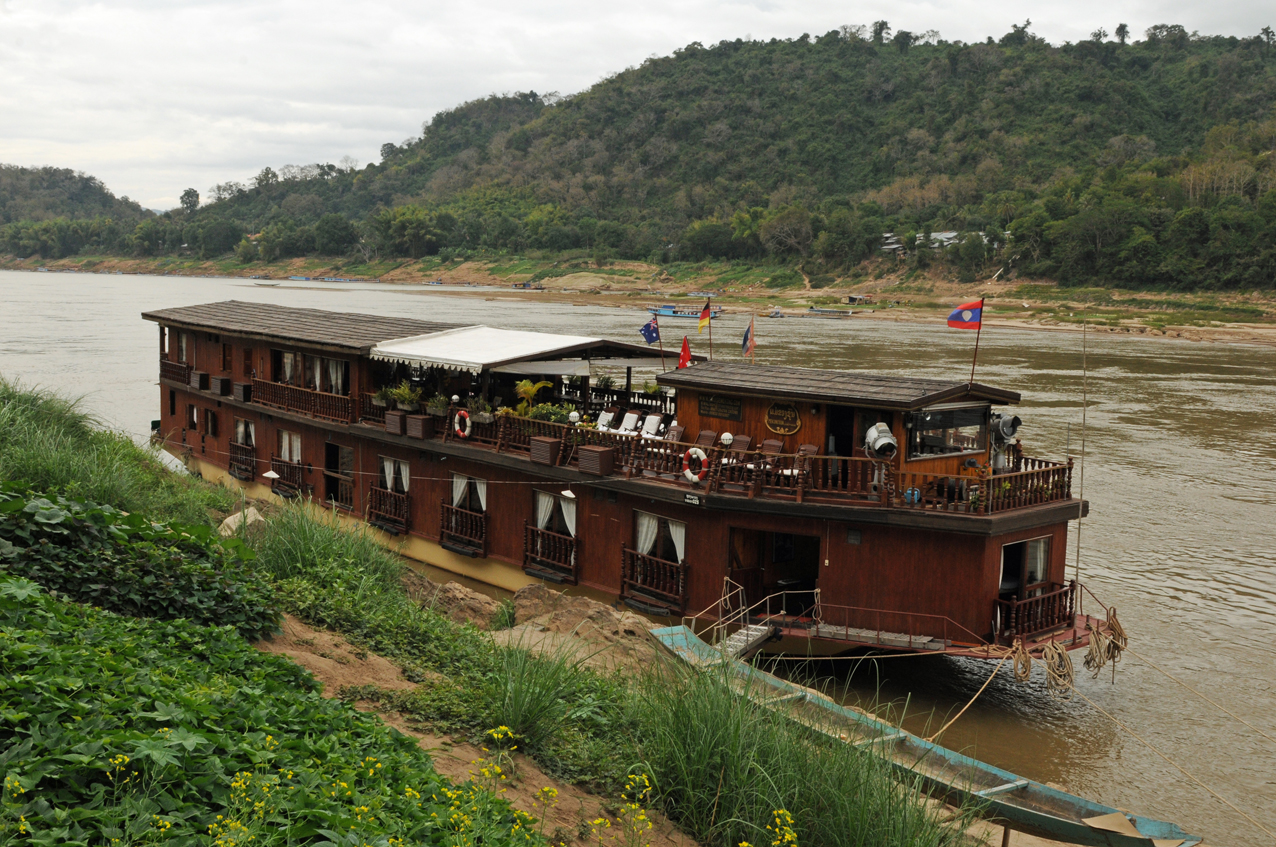
Mekong Cruise to Pak Ou Caves near Luang Brabang City 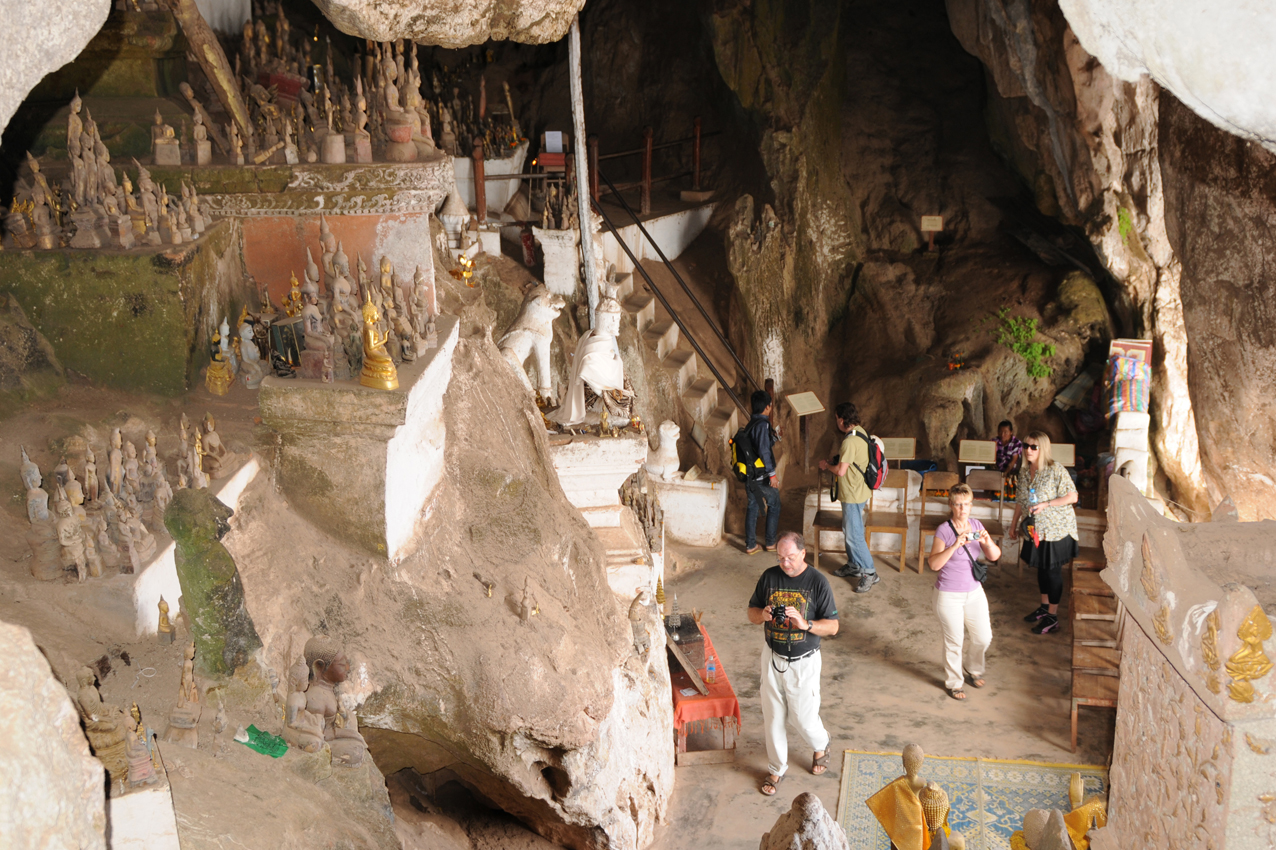
Cave full with thousands of buddahs. Nordlaos: Pak Ou Höhlen mit tausenden von Buddhas. 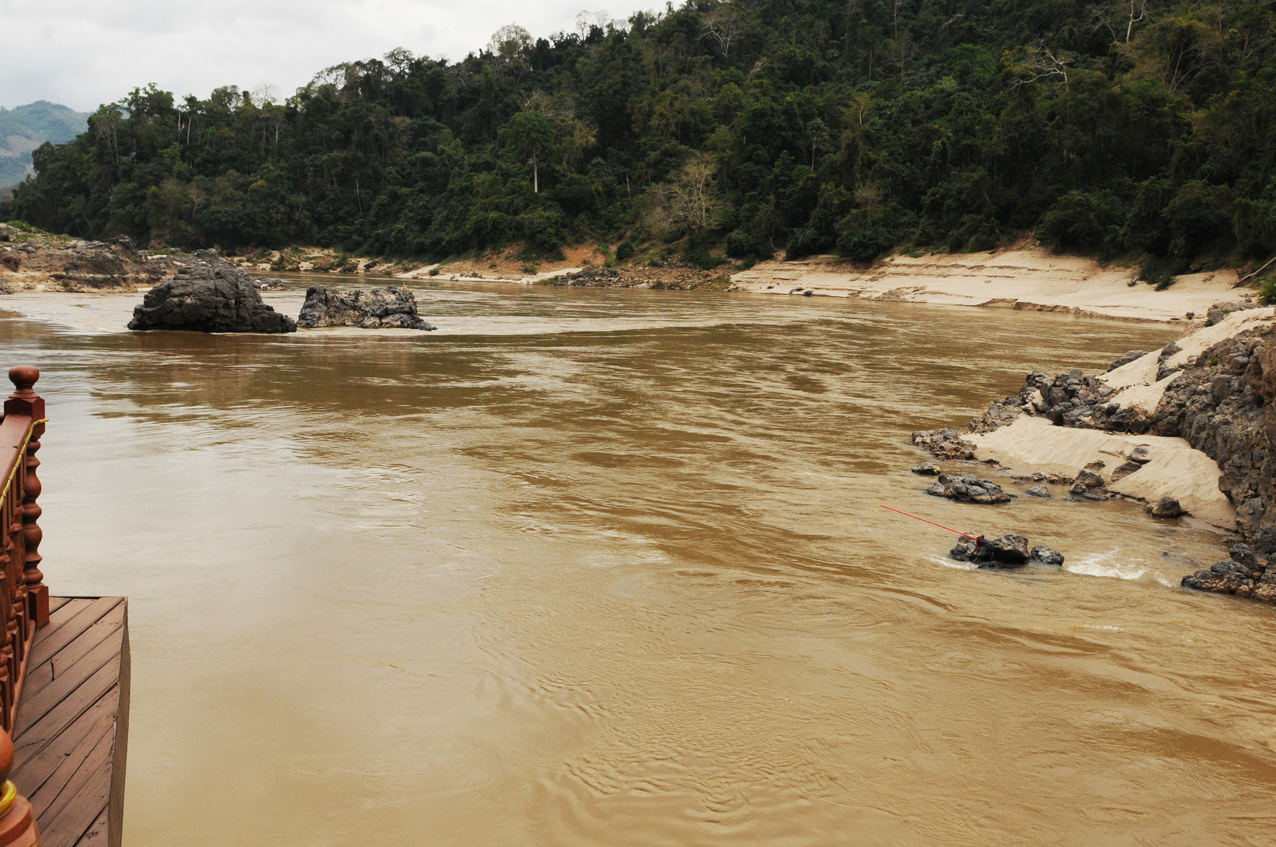
The Mekong river in North Laos is quiet dangerous at low water level in the dry season 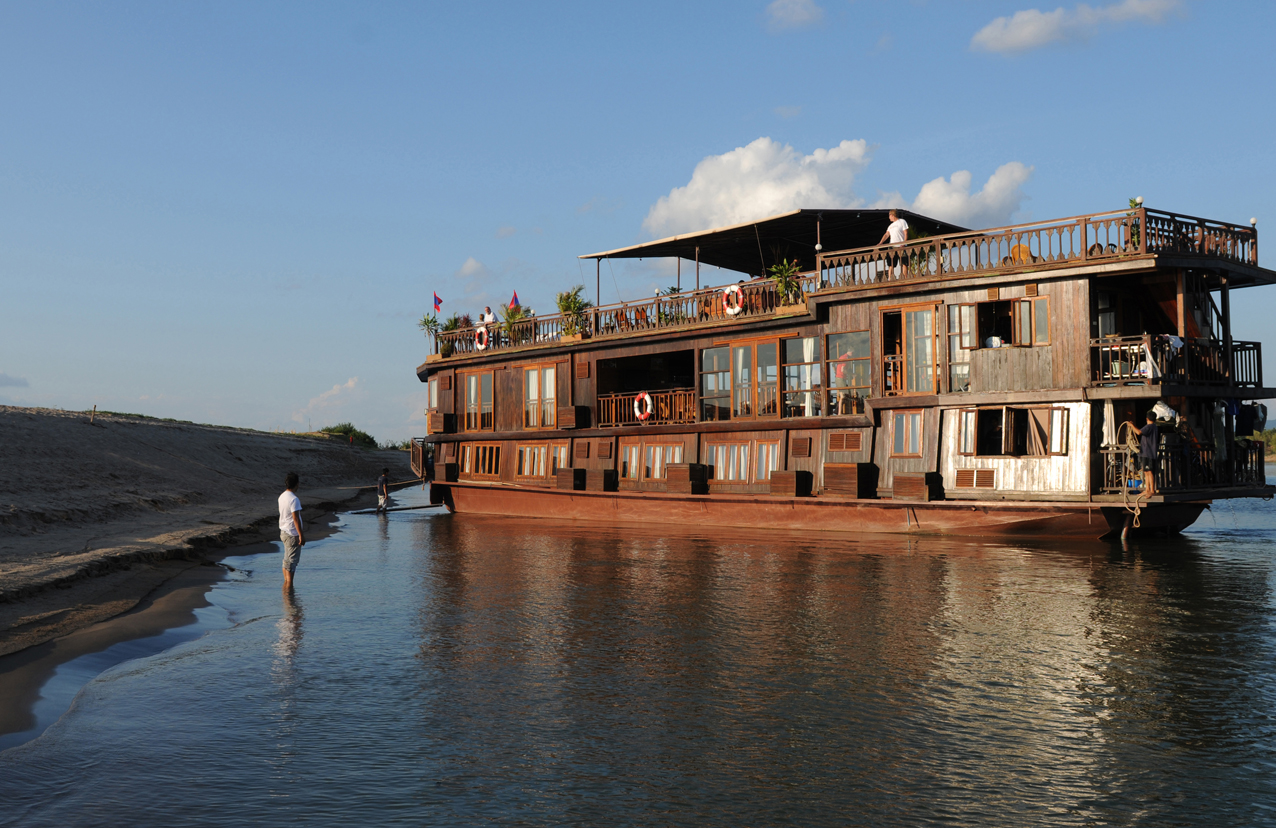
Mekong cuise trip through the 4000 Mekong Islands in the delta 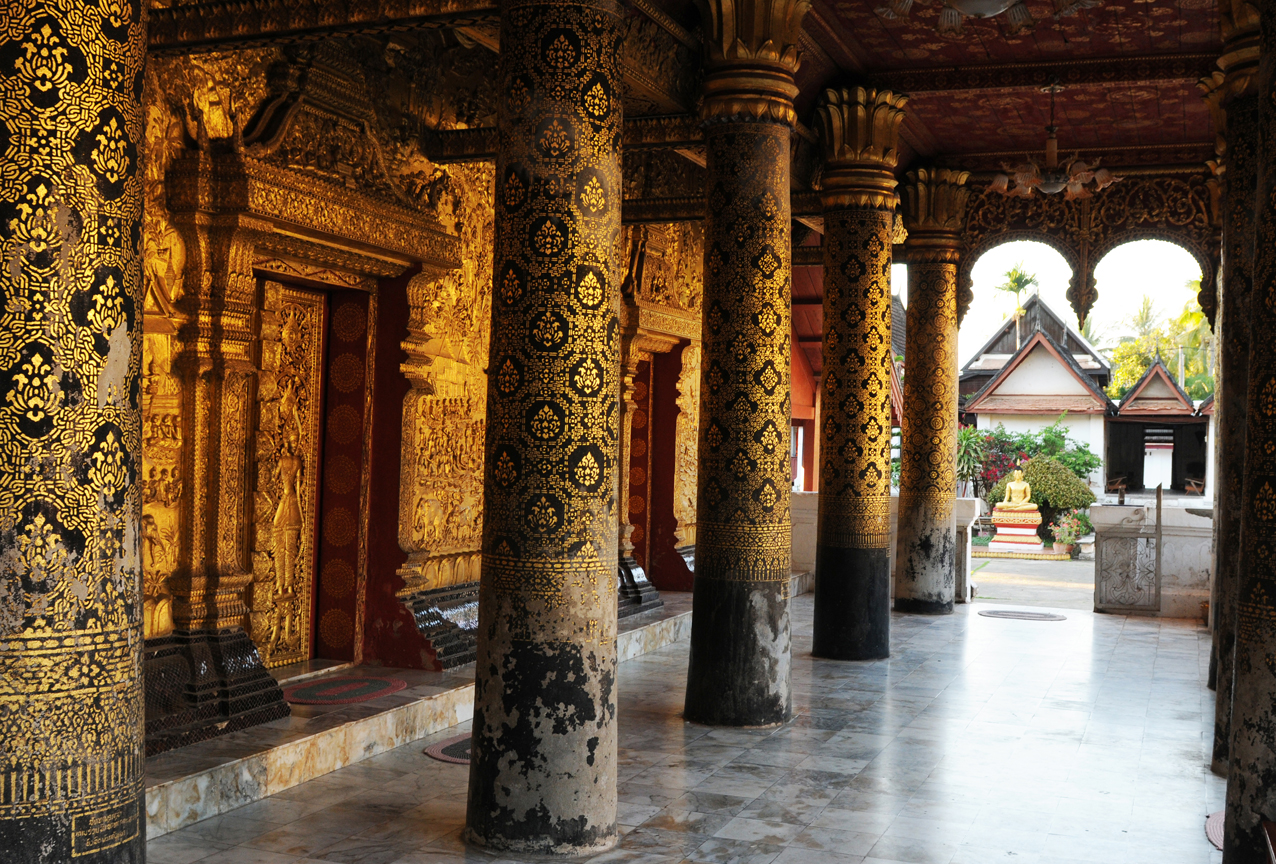
Old buddhist monastry in Luang Prabang City. 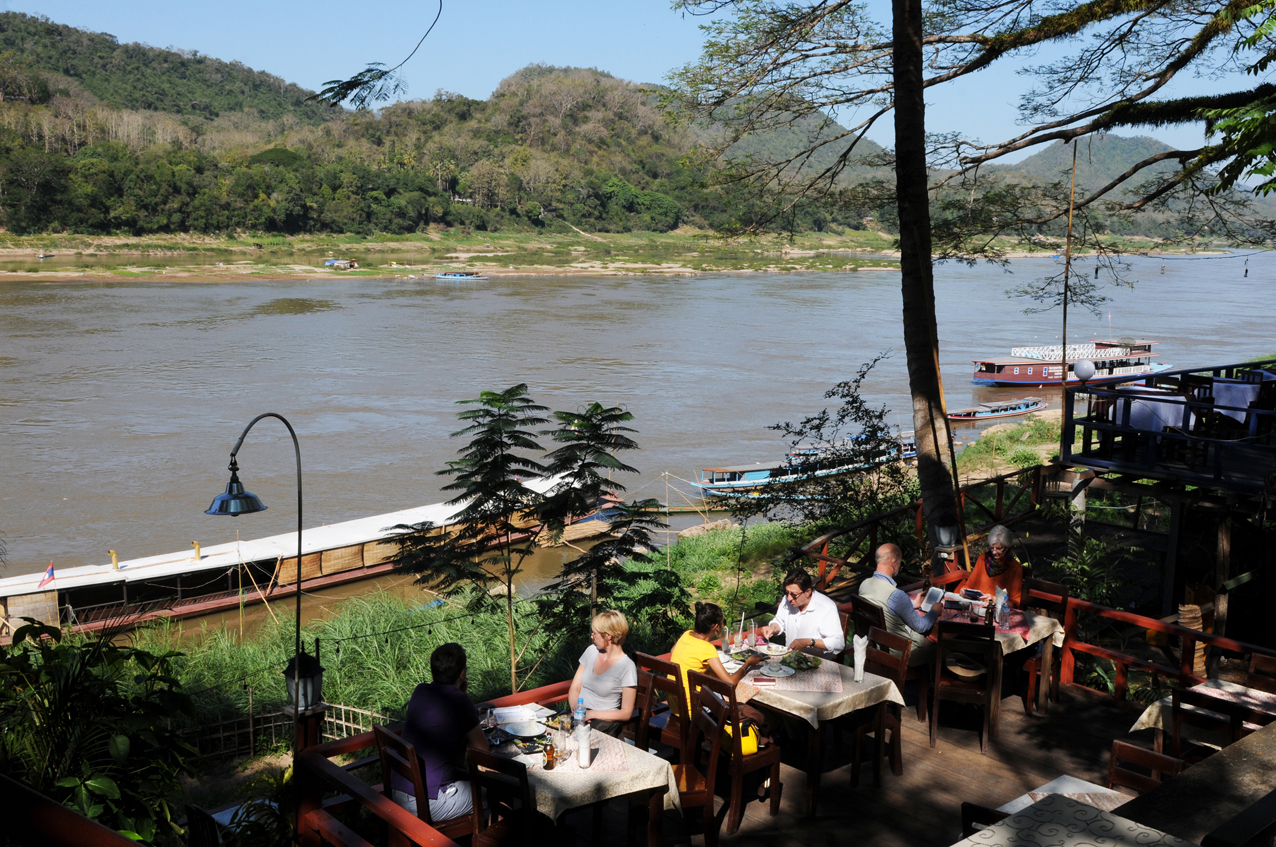
Restaurant in Luang Prabang at the mekong river. 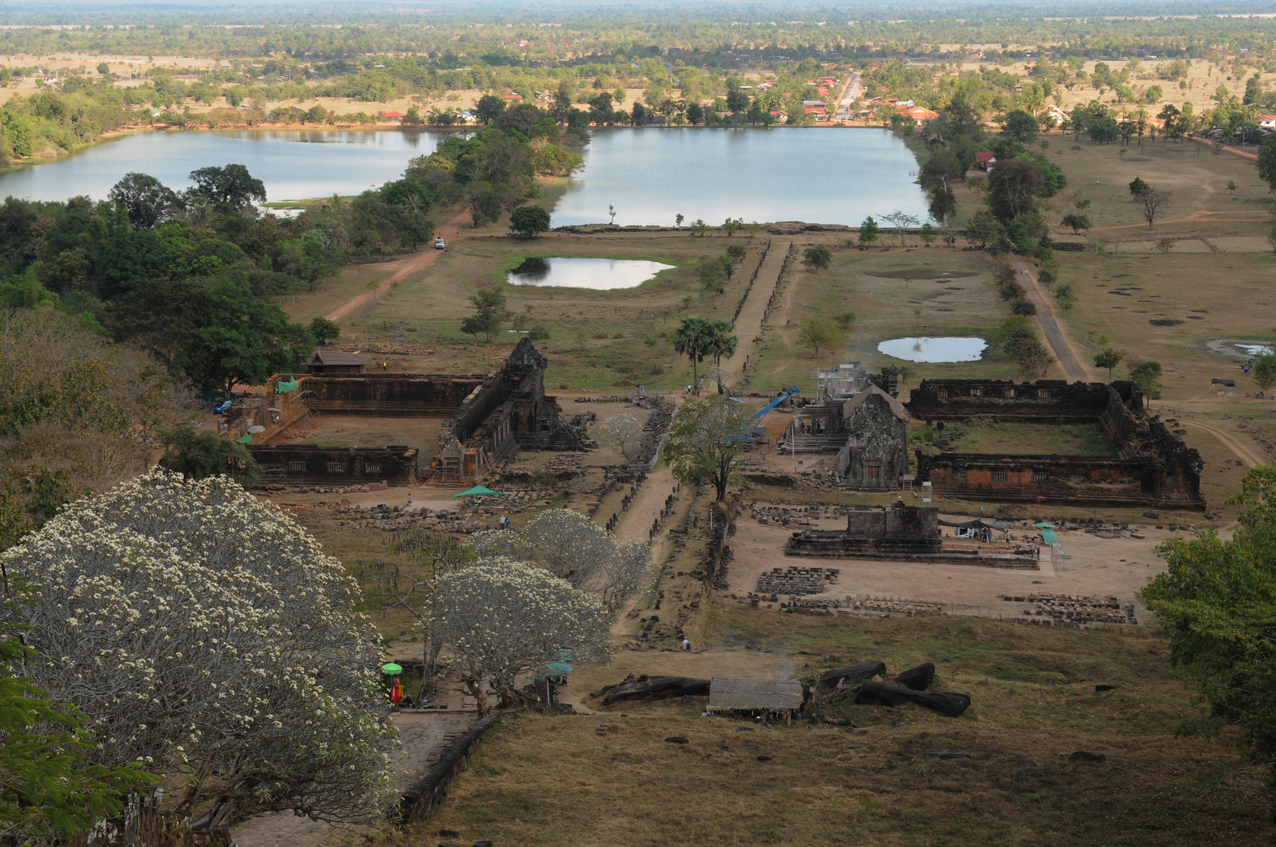
Khmer temples Vat Phou near Pakse 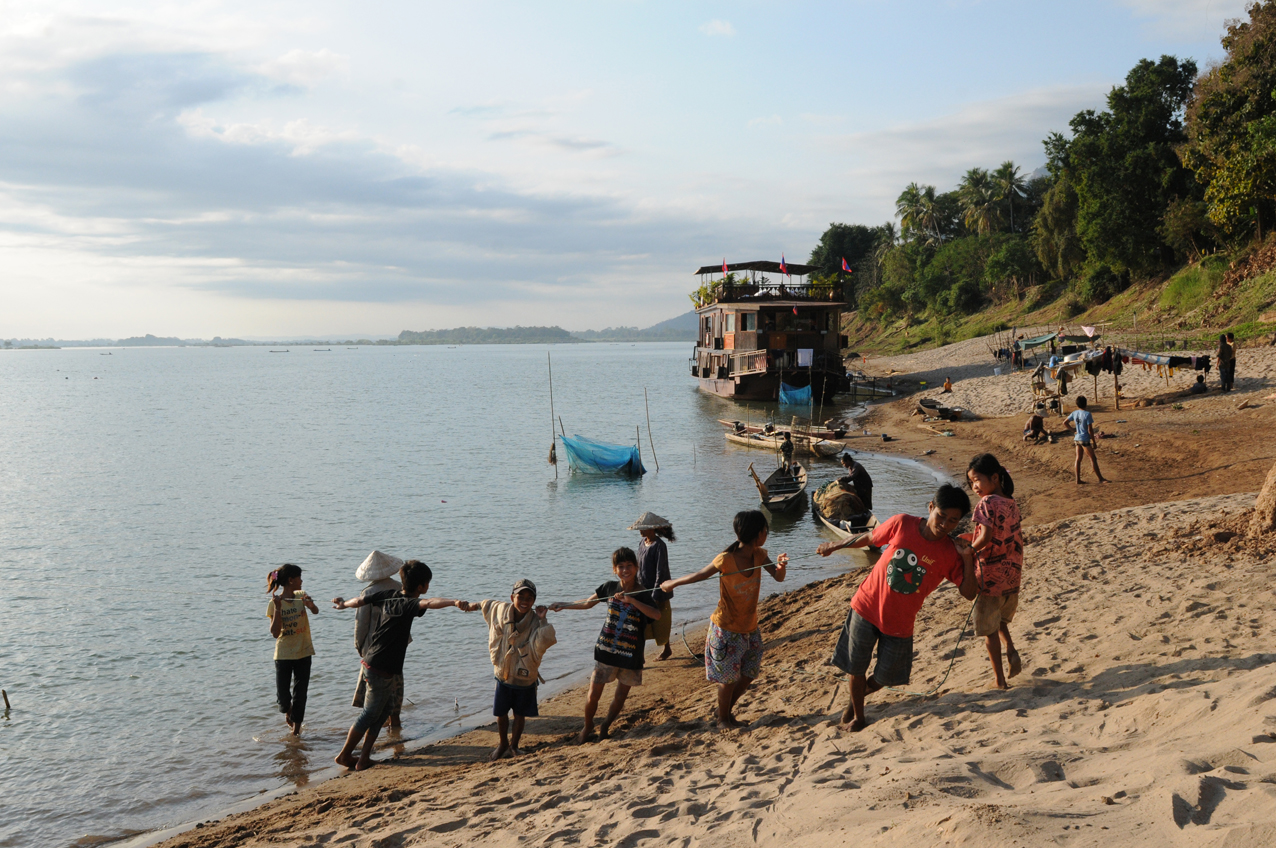
Laos: Fisher men at the Mekong River near Champasak 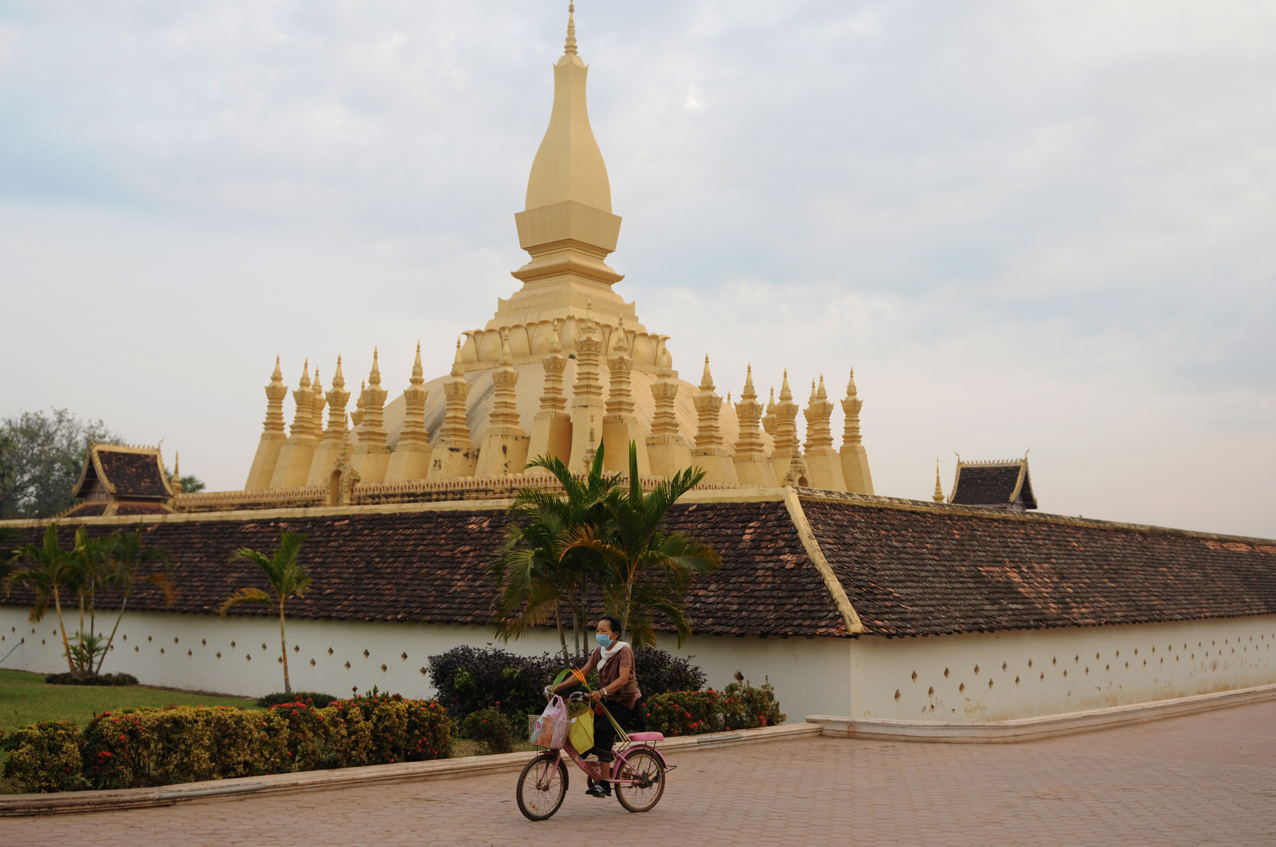
The memorial of king Nokeo Kumane in front of the holy buddhist Stupa That Luang in Viantiane 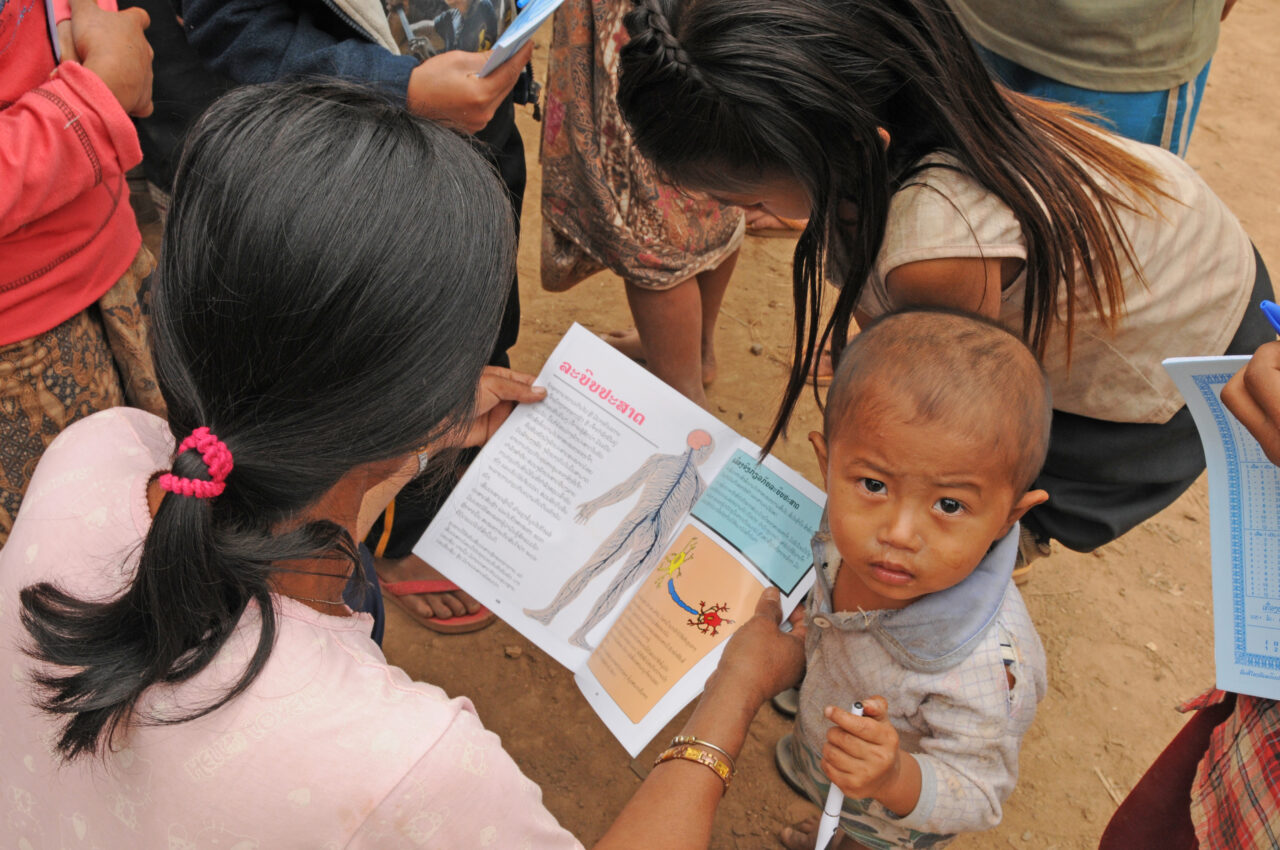
A poor mother with her young boy in Ban Huay Daue Village 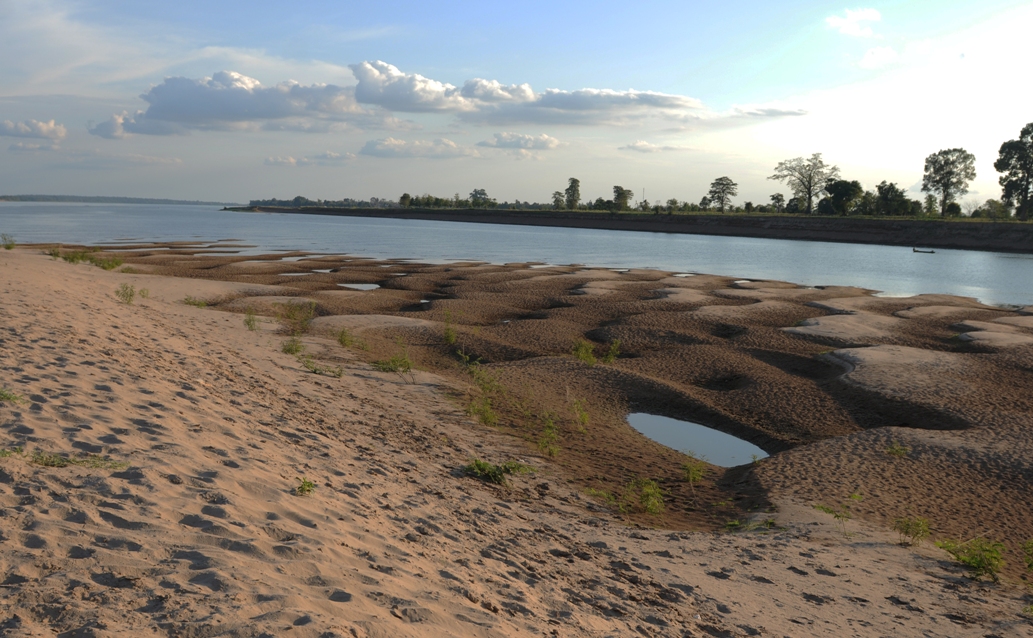
Mekong River Sandbank 
Laos: Mekong River Fishing 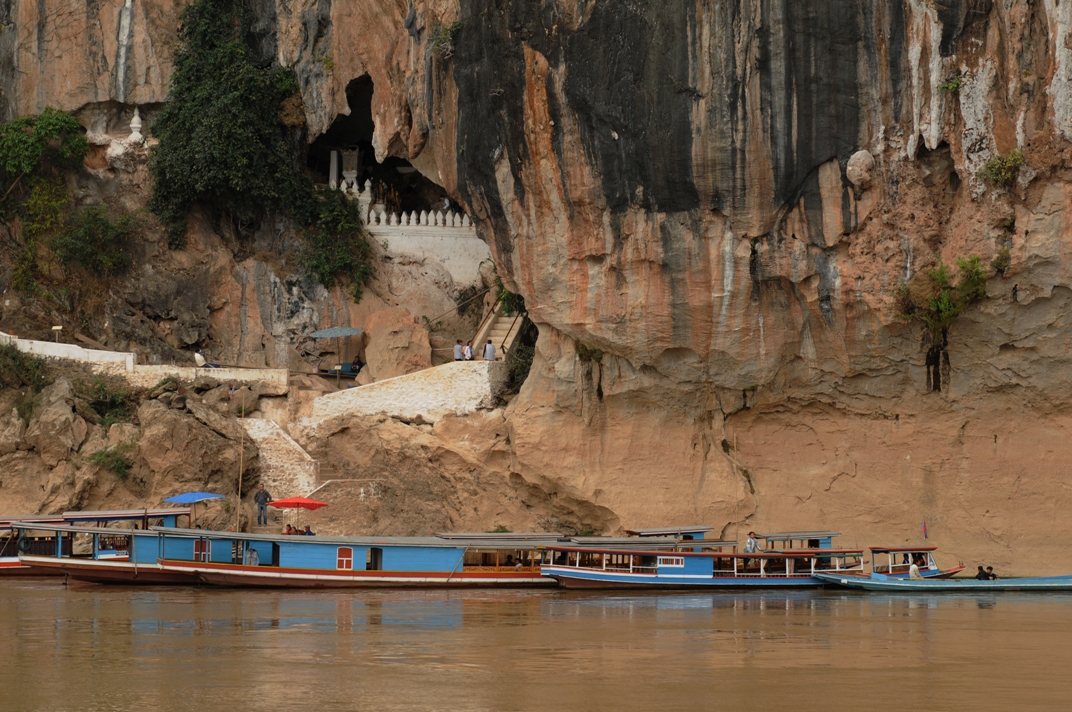
Laos Mekong River Caves 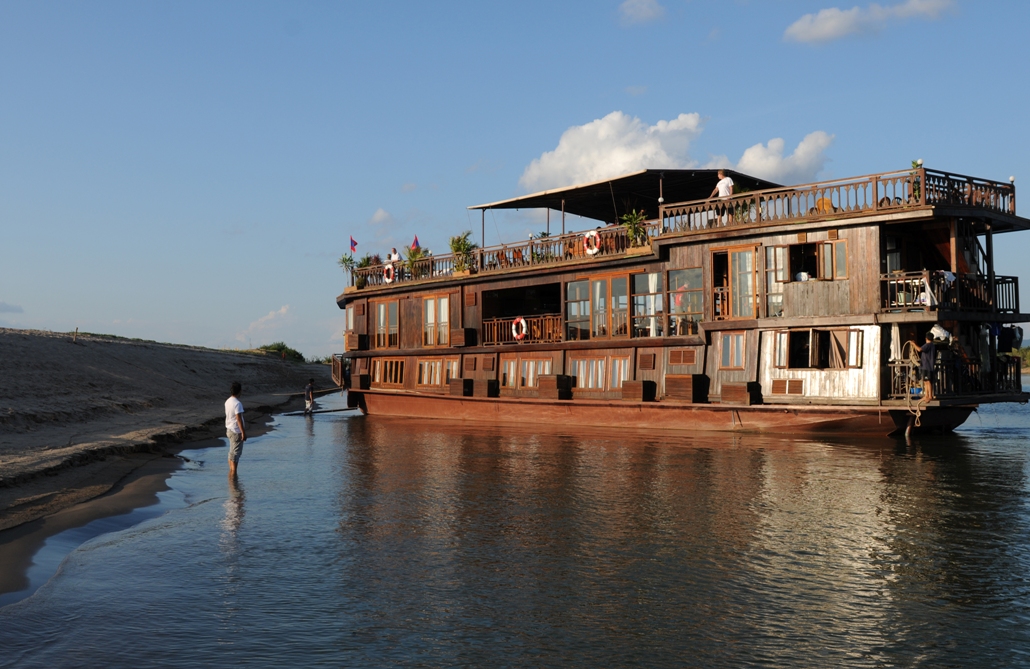
Laos Mekong Island Boat 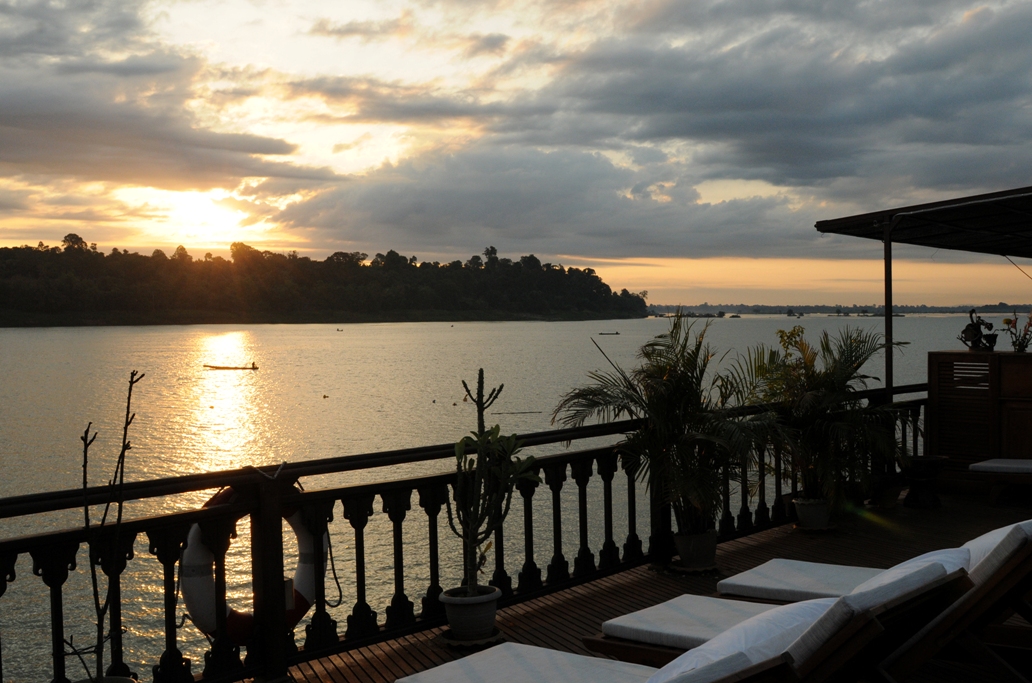
Laos: Mekong Island Cruise 
Laos Stupa Vientiane 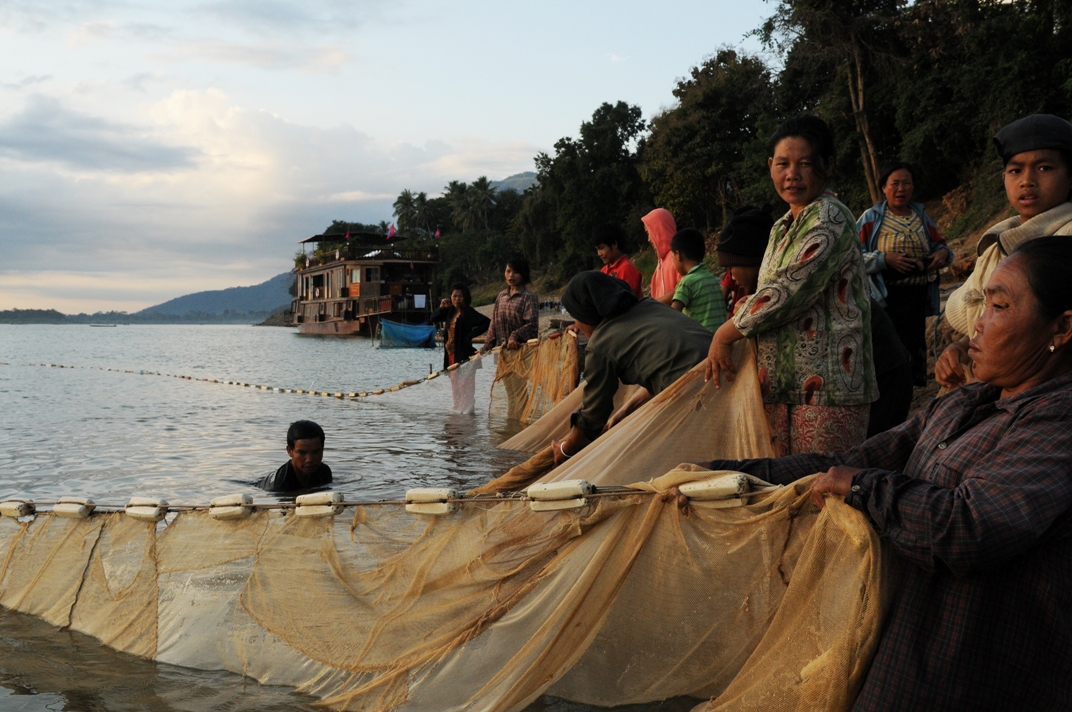
Laos Fisher Mekong River 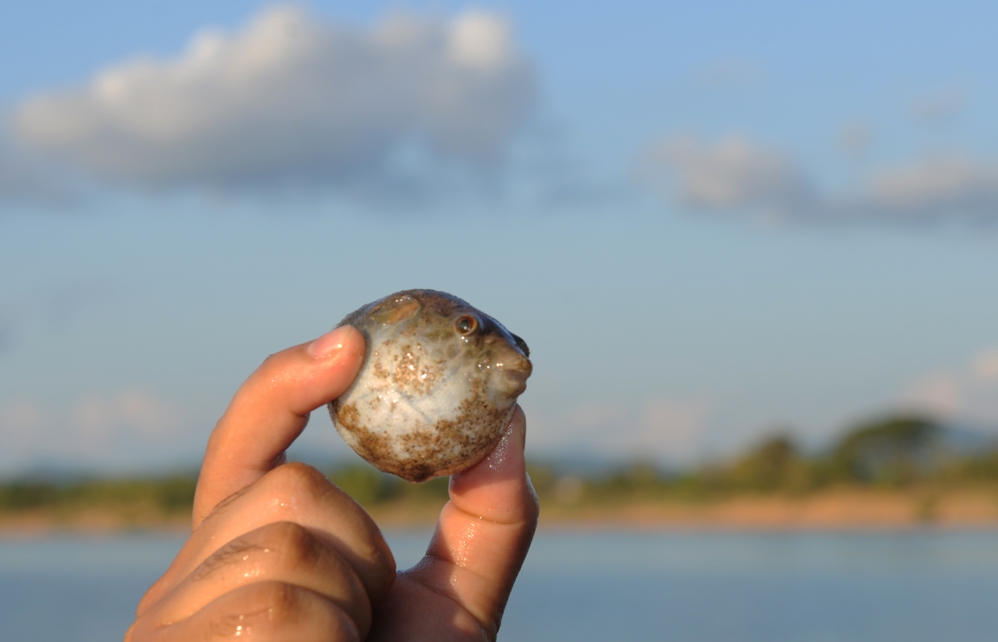
Laos Mekong Kugelfisch 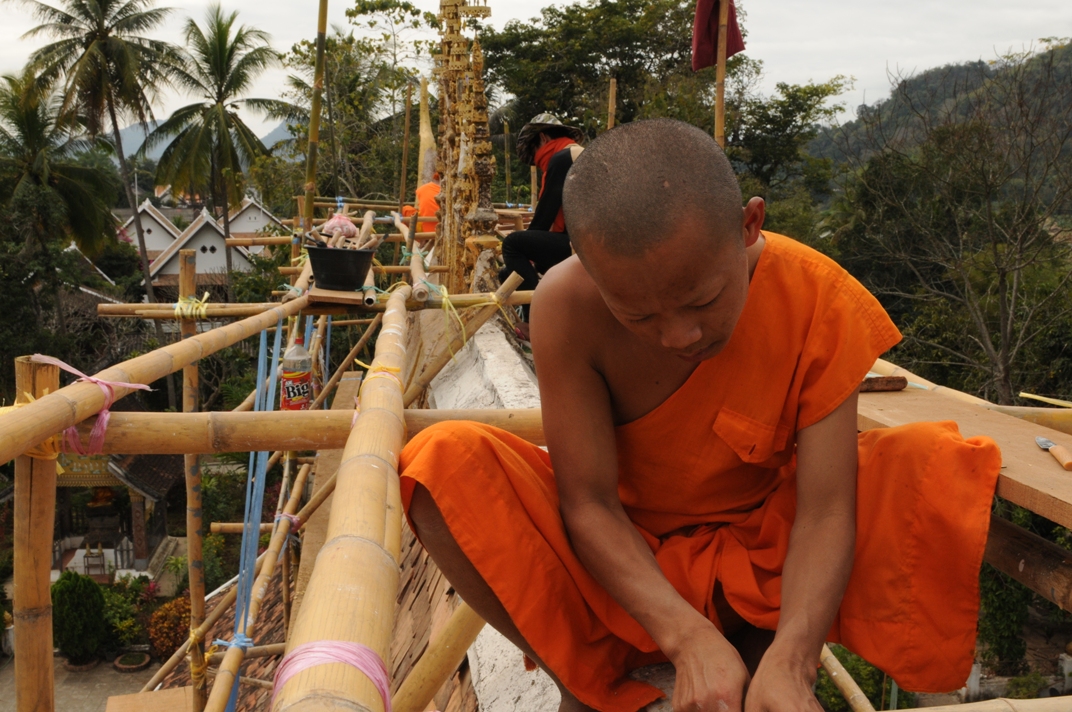
Laos Wat Xieng Thong Temple 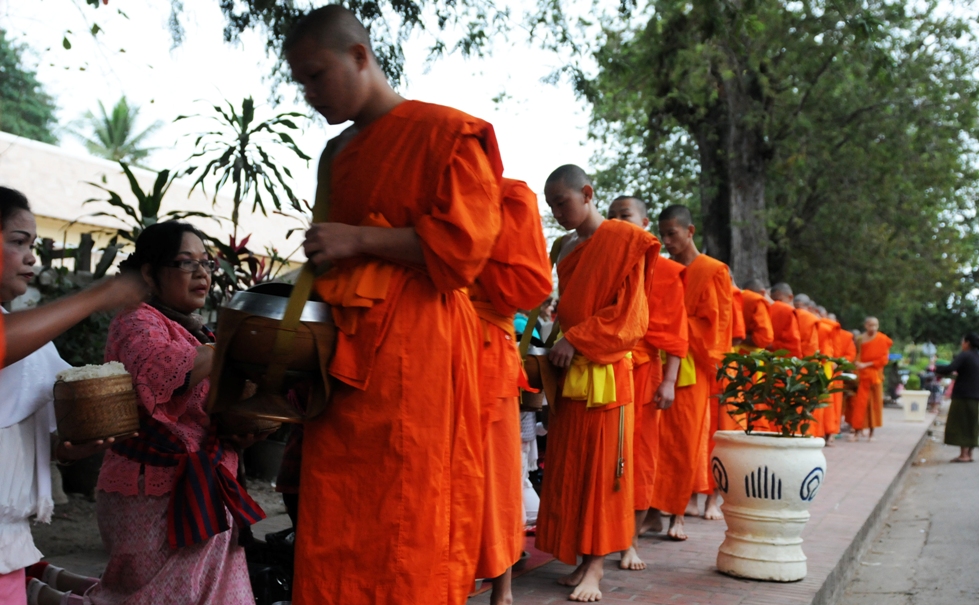
Laos: Monks in Luang Prabang 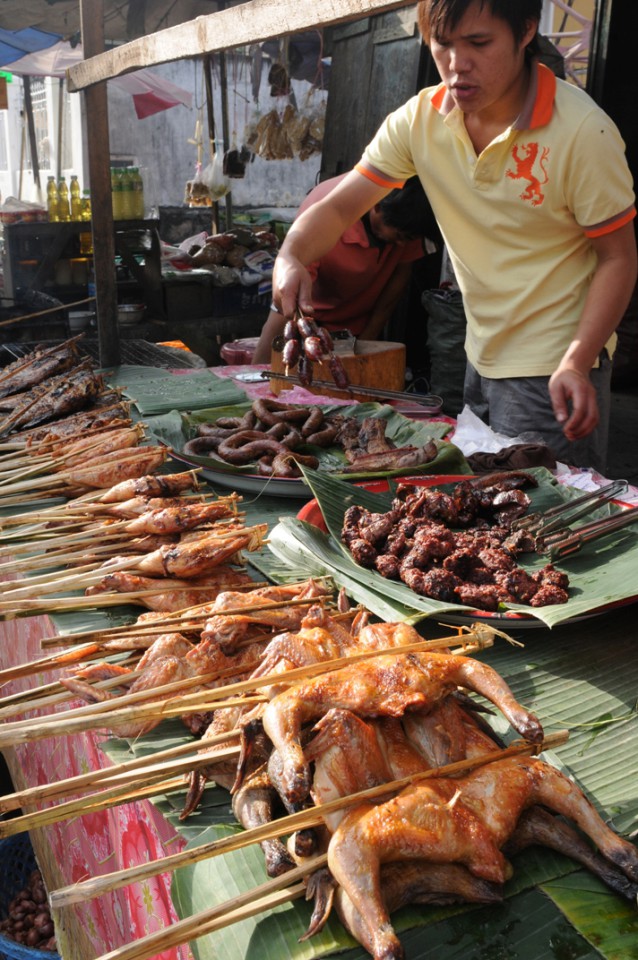
Food-Streetmarket Luang Prabang 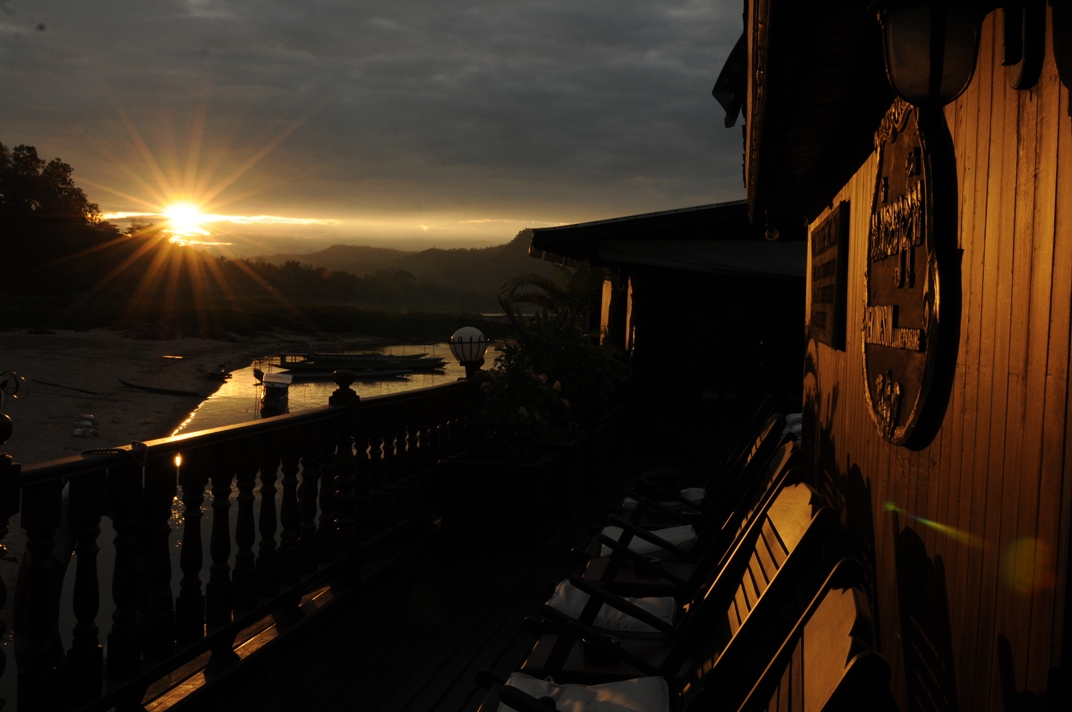
Laos: Mekong Cruise Ship 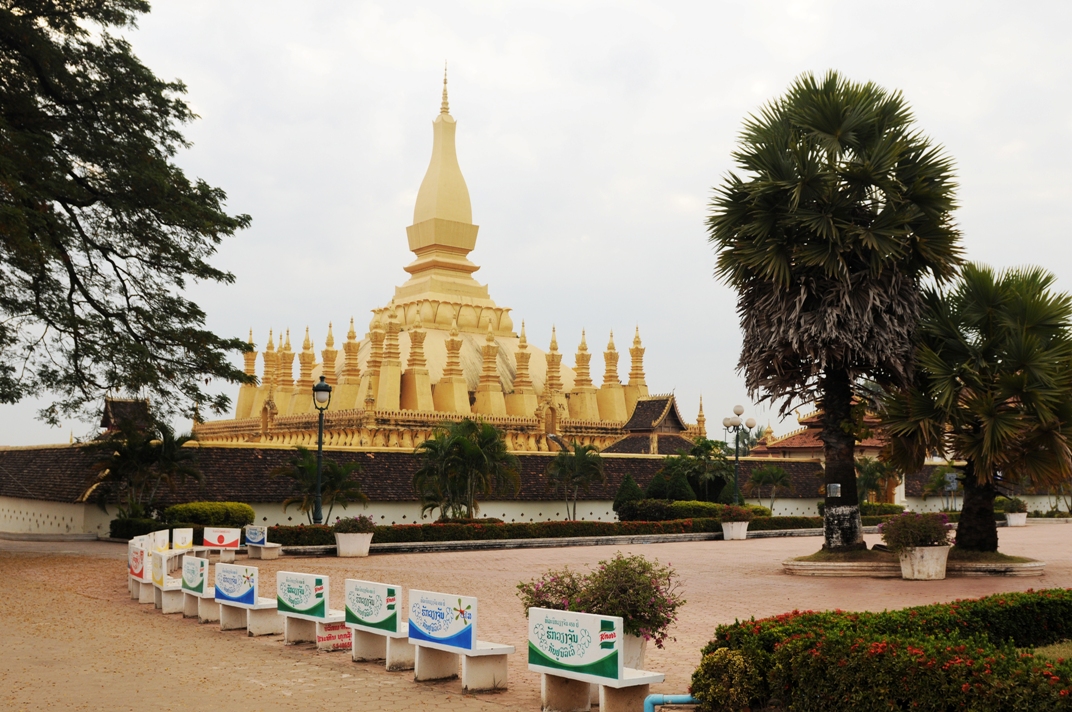
Laos Stupa Vientianne 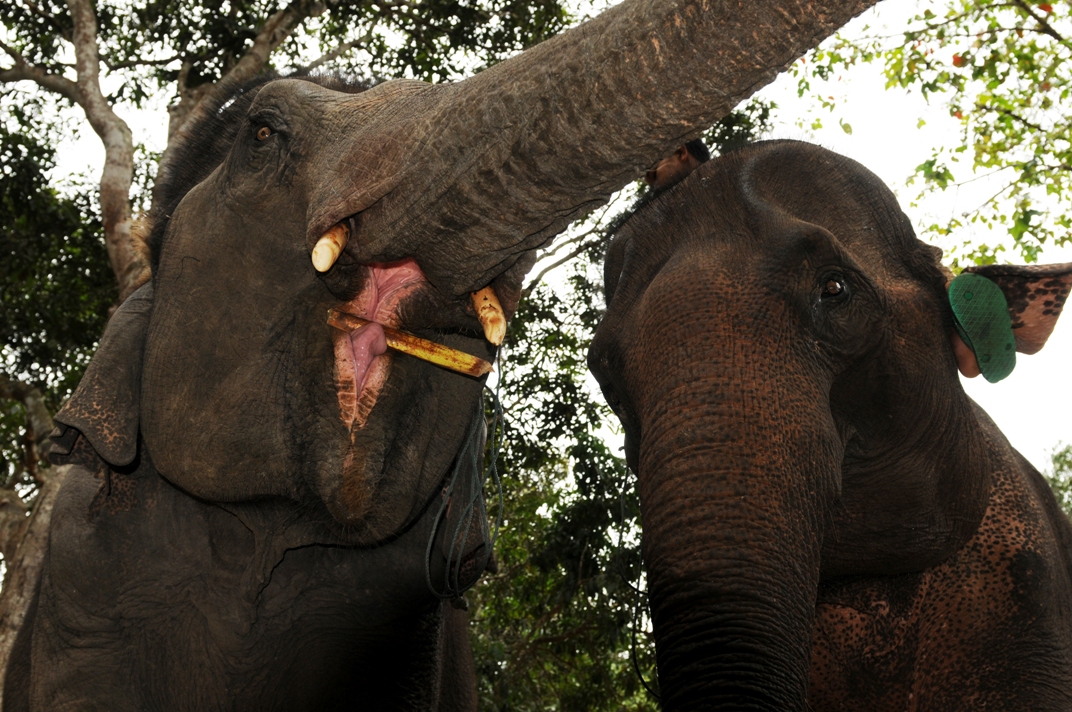
Laos: Two Elephants 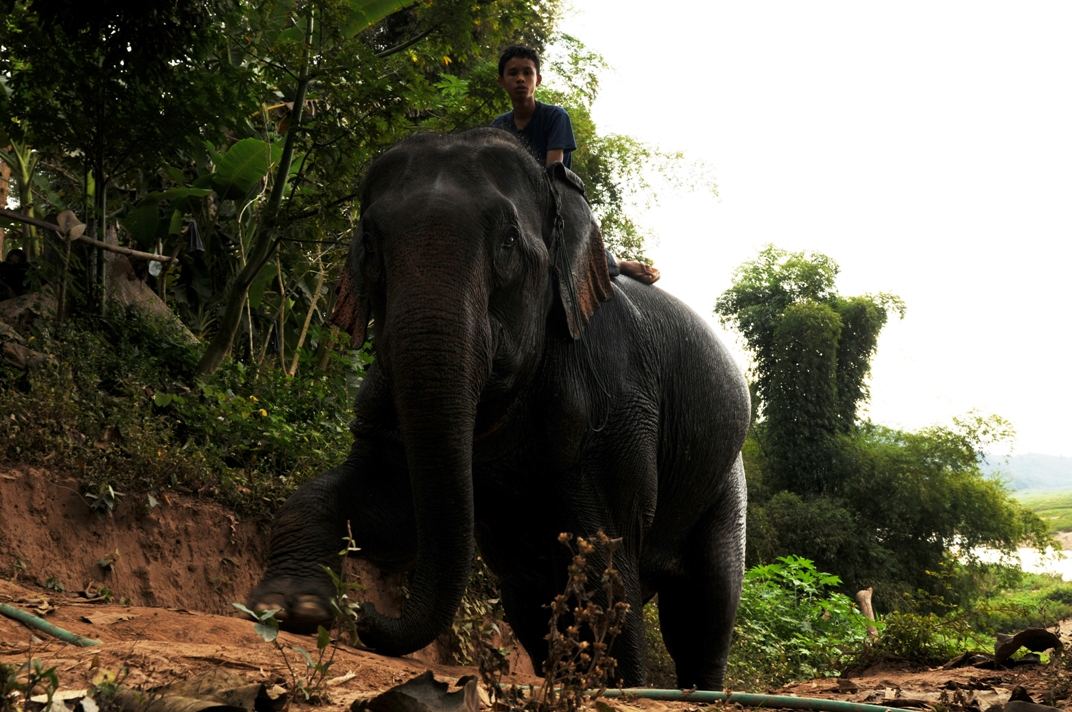
Laos: Mahut & Elephant 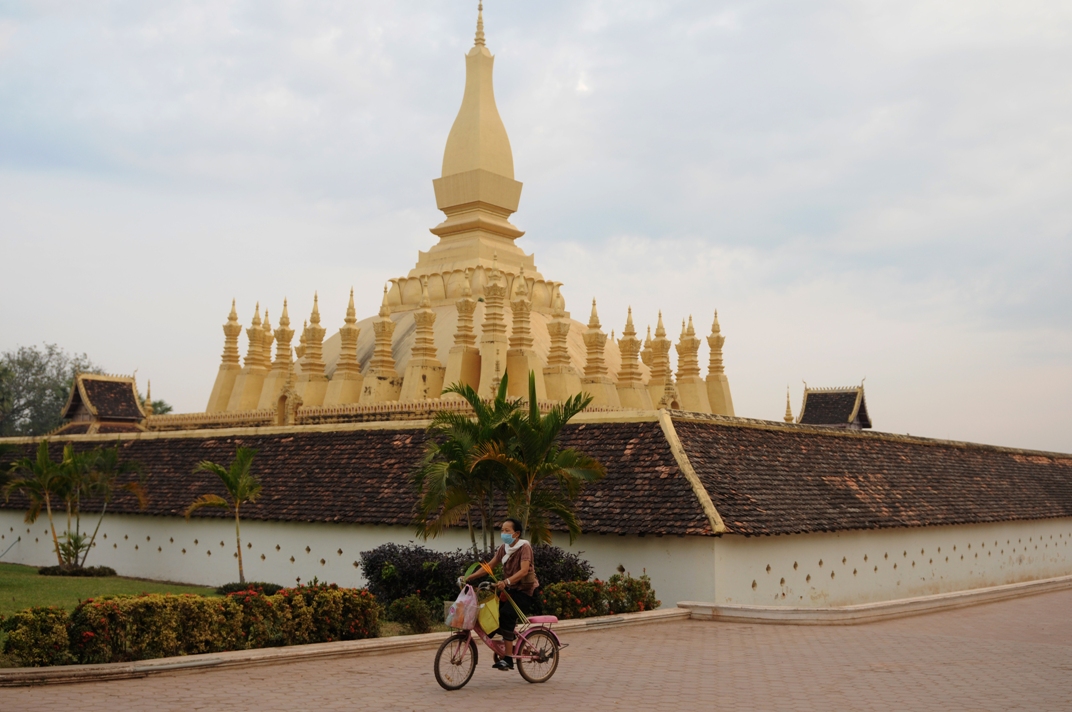
Laos Vietianne Pagoda 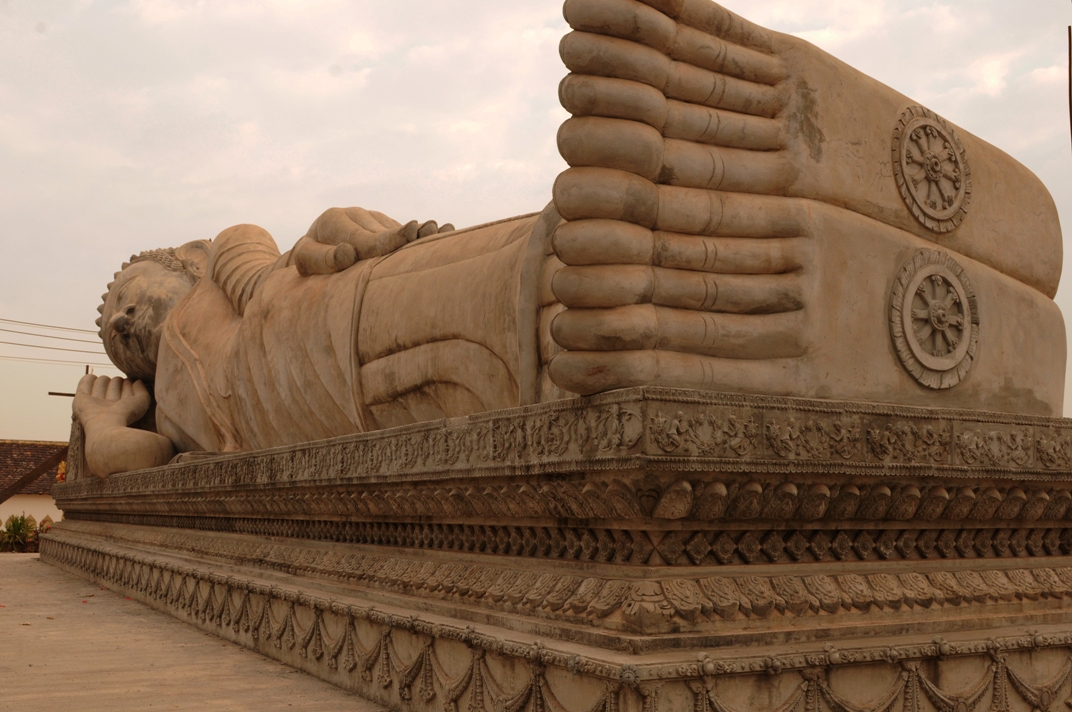

Laos Buddhist Temple Ceremony Vientiane 
Laos Champasak Monk College 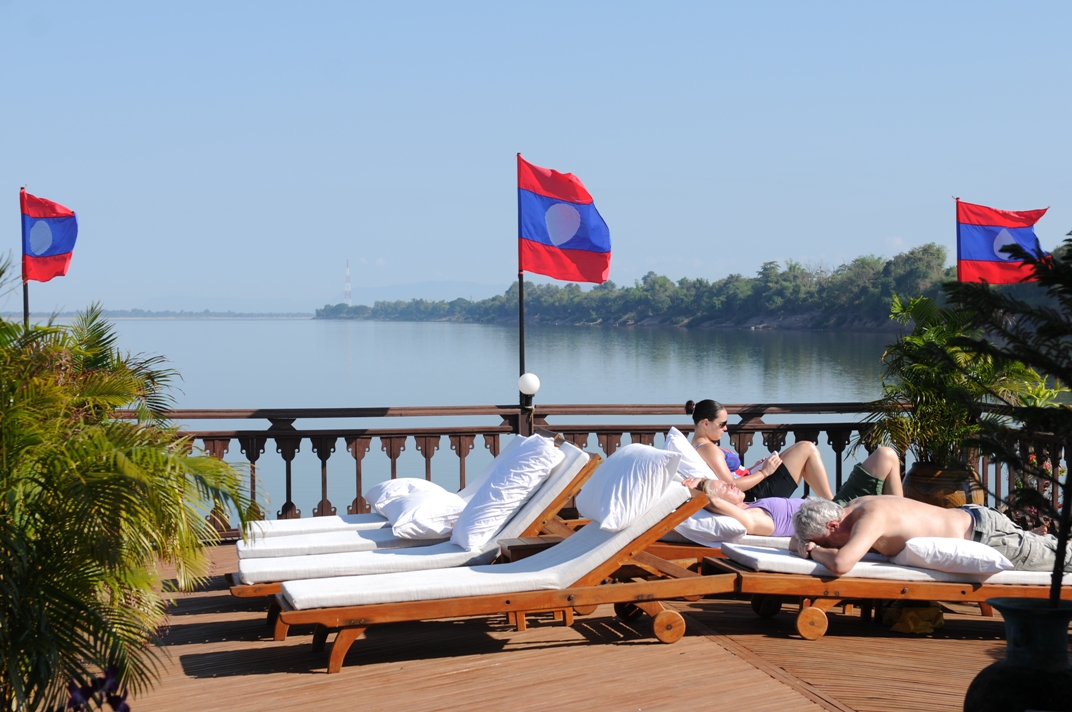
Laos: Mekong Sun Deck 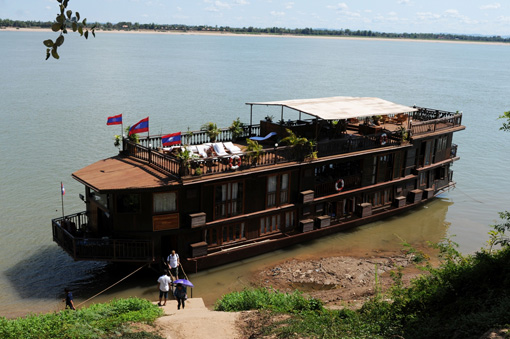
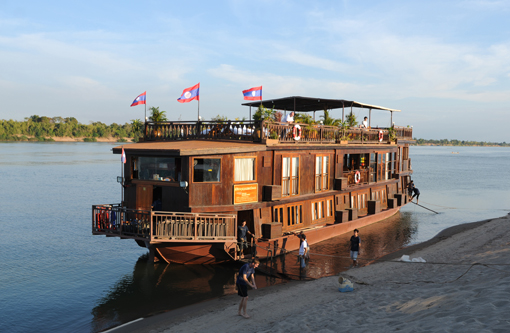
River-Cruise near Pakse 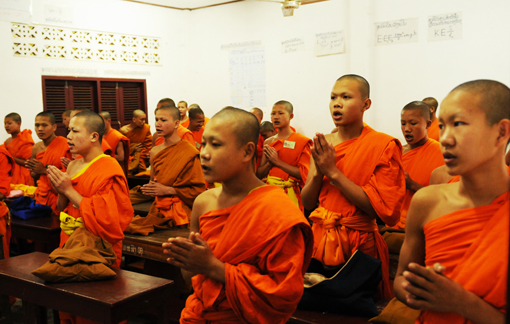
Buddhist college Luang Prabang 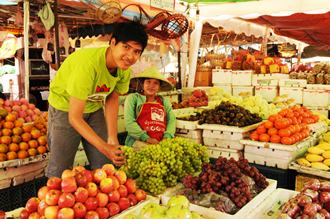
Fresh healthy fruit food at Pakse Market 